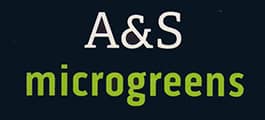Are You Eating Flowers?
ARE YOU EATING FLOWERS?
We all agree that flowers are important for insects, birds, animals, and humans. As a matter of fact, adding flowers to our lives increase our positive energy and reduces our stress level.
It is incredible how many flowers or parts of flowers are edible, and most edible flowers are easy to grow. Our general knowledge about edible flowers comes from old herbals when food also had a medicinal purpose. For instance, eating flowers was commonplace in medieval times.
In addition to looking good, smelling great, and being delicious, most edible flowers are rich in Vitamin C. Edible flowers can provide calcium, iron, potassium, vitamin A, niacin, and riboflavin for their valuable nutrient content.
Of course, some varieties of edible flowers are more palatable than others, but there are so many choices available that you are sure to find some of the ones that appeal to your palate.
Dill, mustard, chives and fennel, roses, borages, pansies, hibiscus, geraniums, cupid’s darts, marigolds, calendulas, and tulips are probably more common and familiar to you. Chances are that you already tasted edible flower leaves and petals in your salad. How about doing it the other way around and stuffing edible flowers like tulips, magnolia, or yucca flowers with your salad?
Go ahead and try stir-fried daylilies, sage flowers tempura, lavender ice cream, stuffed zucchini blossoms, rose butter, magnolia syrup, candied flowers and delicious edible flowers teas for a more adventurous experience with edible flowers.
Keep in mind that, just like mushrooms, not every flower is edible. That is why it is important to do sufficient research to ensure your safety and avoid flowers that may have been treated with fungicide, herbicide, or insecticide.
Edible flowers are an easy way to add colour and flavour to your favourite dishes, so why not make them an essential and permanent part of our cuisine.
Published in July issue of Cowichan Valley Voice magazine.
